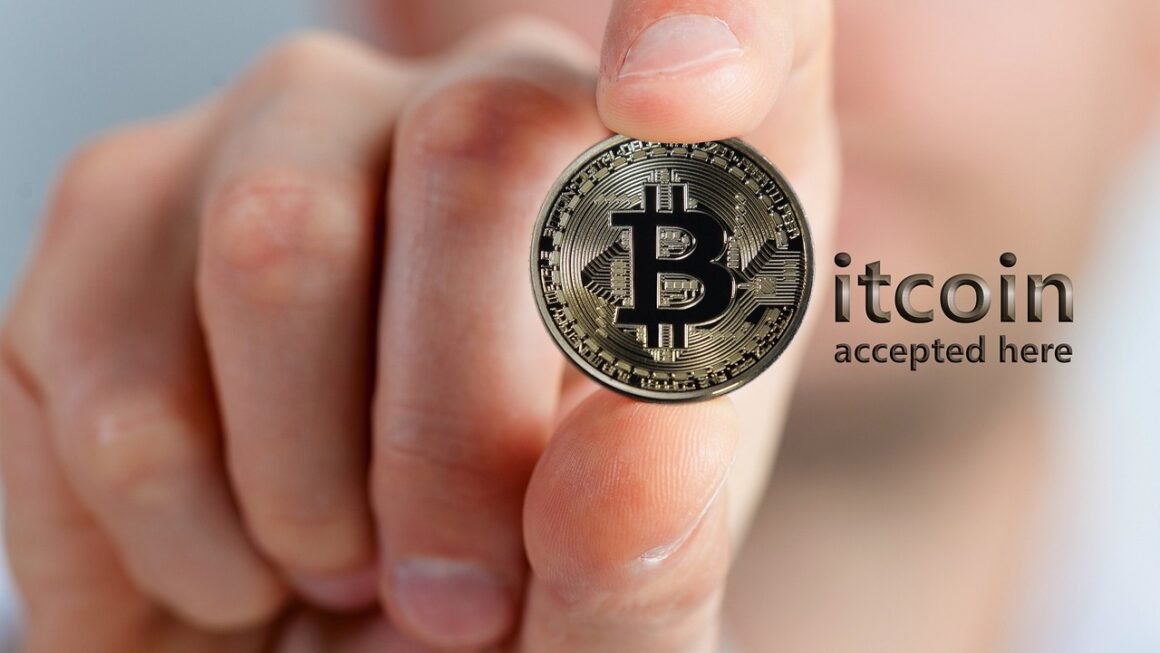Navigating the world of cryptocurrency offers exciting opportunities, but it also demands a keen understanding of crypto security best practices. From safeguarding your digital assets against theft to mitigating the risks of scams and hacks, understanding and implementing robust security measures is paramount. This comprehensive guide will equip you with the knowledge and tools necessary to navigate the crypto landscape securely and protect your investments.
Understanding the Landscape of Crypto Security
Cryptocurrency security is a multifaceted field encompassing various techniques and strategies to protect digital assets from unauthorized access, theft, and manipulation. Given the decentralized and often irreversible nature of cryptocurrency transactions, security is absolutely crucial.
Why is Crypto Security Important?
- Irreversible Transactions: Unlike traditional banking, crypto transactions are typically irreversible. Once a transaction is confirmed on the blockchain, it’s extremely difficult to reverse, making it crucial to prevent fraudulent or unauthorized transactions from occurring in the first place.
- Decentralized Nature: The decentralized nature of cryptocurrencies, while a benefit in many ways, means there is no central authority to recover lost or stolen funds. Individual responsibility for security is therefore paramount.
- Increasing Sophistication of Attacks: Cybercriminals are constantly developing more sophisticated methods to steal cryptocurrency, including phishing attacks, malware, and exploits targeting vulnerabilities in exchanges and wallets.
- Financial Loss: A successful crypto security breach can result in significant financial losses, as stolen cryptocurrency is often difficult or impossible to recover.
Common Crypto Security Threats
Understanding the types of threats you face is the first step in protecting yourself. Common threats include:
- Phishing Attacks: Deceptive emails, messages, or websites designed to trick you into revealing your private keys or login credentials. Example: A fake email from a crypto exchange asking you to “verify your account” by clicking a link and entering your password.
- Malware: Malicious software that can steal your private keys, monitor your activity, or control your device. Example: Keyloggers recording your keystrokes when you enter your wallet password.
- Exchange Hacks: Attacks targeting cryptocurrency exchanges, resulting in the theft of user funds. Example: The Mt. Gox hack, which resulted in the loss of hundreds of millions of dollars worth of Bitcoin.
- Wallet Hacks: Attacks targeting individual cryptocurrency wallets, often through vulnerabilities in software or weak passwords. Example: Brute-force attacks guessing the password to a wallet.
- 51% Attacks: If a single entity controls more than 50% of a cryptocurrency’s network hash rate, they can manipulate the blockchain and reverse transactions. This is more of a risk for smaller cryptocurrencies.
- Pump and Dump Schemes: Artificially inflating the price of a cryptocurrency and then selling it for a profit, leaving other investors with losses.
Securing Your Crypto Wallets
Your crypto wallet is your digital vault, and securing it is paramount. Different types of wallets offer varying levels of security.
Choosing the Right Wallet Type
- Hardware Wallets: These are physical devices that store your private keys offline, providing the highest level of security. Example: Ledger Nano S Plus, Trezor Model T.
- Software Wallets (Desktop & Mobile): These wallets are installed on your computer or smartphone. While convenient, they are more vulnerable to malware and hacking. Example: Exodus, Trust Wallet.
- Online Wallets (Exchange Wallets): Wallets provided by cryptocurrency exchanges are the least secure option as they are controlled by a third party. Only use them for short-term trading. Example: Coinbase, Binance.
- Paper Wallets: Printing your private and public keys on a piece of paper and storing it offline. Offers good security but requires careful handling and storage to prevent loss or damage.
Best Practices for Wallet Security
- Strong Passwords: Use strong, unique passwords for all your wallets and accounts. A password manager can help you generate and store them securely.
- Two-Factor Authentication (2FA): Enable 2FA on all accounts that support it. This adds an extra layer of security by requiring a code from your phone or another device in addition to your password.
- Backup Your Wallet: Create backups of your wallet and store them in a safe place, preferably offline. This will allow you to recover your funds if your device is lost, stolen, or damaged.
- Keep Software Updated: Regularly update your wallet software to patch any security vulnerabilities.
- Be Careful Where You Store Your Seed Phrase (Recovery Phrase): Your seed phrase is the key to recovering your wallet. Store it offline, in a safe and secure location, and never share it with anyone. Consider splitting it into multiple pieces and storing them separately.
Protecting Against Phishing and Scams
Phishing attacks and scams are prevalent in the crypto space, targeting unsuspecting individuals with deceptive tactics.
Identifying Phishing Attempts
- Suspicious Emails/Messages: Be wary of emails or messages that ask for your private keys, passwords, or other sensitive information.
- Urgent Requests: Scammers often create a sense of urgency to pressure you into acting quickly without thinking.
- Poor Grammar and Spelling: Phishing emails often contain grammatical errors and spelling mistakes.
- Unsolicited Offers: Be skeptical of unsolicited offers, such as free cryptocurrency or guaranteed investment returns.
Avoiding Common Crypto Scams
- Pump and Dump Schemes: Be wary of schemes that promise quick profits by artificially inflating the price of a cryptocurrency.
- Fake ICOs: Research initial coin offerings (ICOs) thoroughly before investing. Scammers often create fake ICOs to steal investors’ money.
- Romance Scams: Be cautious of online relationships that quickly turn to requests for cryptocurrency.
- Giveaway Scams: Scammers often impersonate well-known figures or companies on social media and offer free cryptocurrency in exchange for a small deposit.
Practical Tips to Stay Safe
- Verify Information: Always verify information by contacting the source directly through official channels.
- Don’t Click Suspicious Links: Avoid clicking on links in emails or messages from unknown senders.
- Be Skeptical: If something sounds too good to be true, it probably is.
- Report Suspicious Activity: Report phishing attempts and scams to the relevant authorities.
Securing Your Crypto Exchange Accounts
Cryptocurrency exchanges are prime targets for hackers due to the large amounts of cryptocurrency they hold.
Choosing a Secure Exchange
- Research and Reputation: Choose an exchange with a good reputation and a strong track record of security.
- Security Measures: Look for exchanges that implement robust security measures, such as two-factor authentication, cold storage of funds, and regular security audits.
- Insurance: Some exchanges offer insurance to protect against the loss of funds due to hacking or theft.
Best Practices for Exchange Account Security
- Unique Passwords: Use a strong, unique password for your exchange account that is different from the passwords you use for other accounts.
- Two-Factor Authentication (2FA): Enable 2FA on your exchange account to add an extra layer of security. Consider using an authenticator app instead of SMS for enhanced security.
- Withdraw Funds Regularly: Don’t keep large amounts of cryptocurrency on an exchange for extended periods. Withdraw your funds to a secure wallet that you control.
- Whitelist Addresses: Use the “whitelist address” feature (if available) on your exchange to only allow withdrawals to specific addresses. This can prevent unauthorized withdrawals.
- Monitor Your Account: Regularly monitor your exchange account for suspicious activity.
Advanced Security Measures
For users holding significant amounts of cryptocurrency or those seeking the highest level of security, consider implementing advanced security measures.
Multi-Signature (Multi-Sig) Wallets
- What they are: Multi-signature wallets require multiple private keys to authorize a transaction. This means that even if one key is compromised, the funds are still protected.
- Example: A business might require two out of three owners to sign a transaction, ensuring that no single individual can unilaterally access company funds.
- Benefits: Increased security against theft, loss of keys, and insider threats.
Hardware Security Modules (HSMs)
- What they are: HSMs are dedicated hardware devices that securely store and manage cryptographic keys.
- Use Cases: Used by exchanges and institutions to protect large amounts of cryptocurrency.
- Benefits: Provides the highest level of security for private keys.
Secure Enclaves
- What they are: Secure enclaves are isolated and protected environments within a processor that can be used to store and process sensitive data, such as private keys.
- Benefits: Protects against malware and unauthorized access, even if the operating system is compromised.
Conclusion
Securing your cryptocurrency requires a proactive and multifaceted approach. By understanding the risks, implementing strong security measures, and staying informed about the latest threats, you can significantly reduce your chances of becoming a victim of crypto theft or scams. Remember to regularly review and update your security practices as the crypto landscape evolves. Always prioritize the security of your private keys and be skeptical of unsolicited offers or requests for your personal information. By taking these precautions, you can navigate the world of cryptocurrency with confidence and peace of mind.



